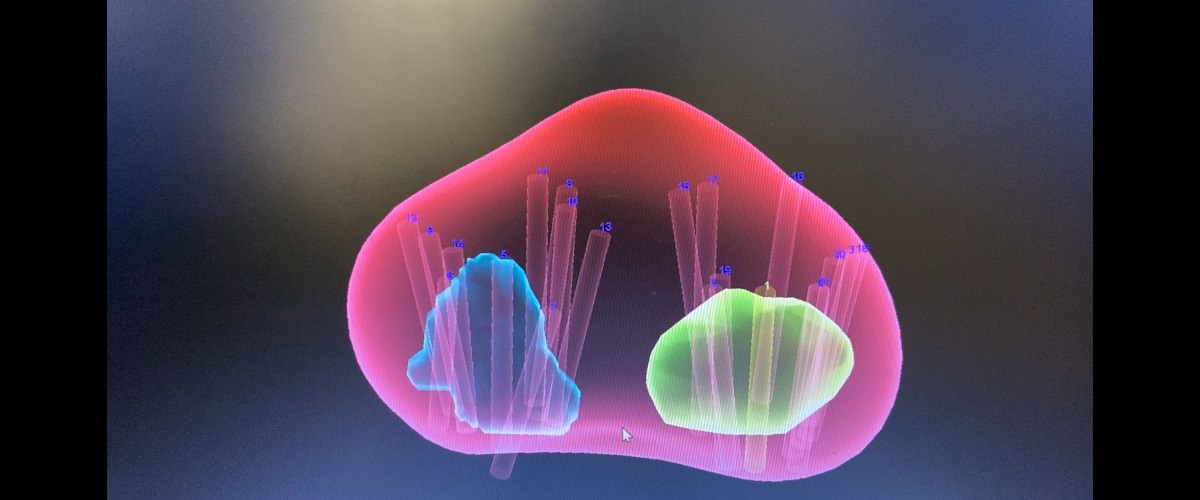MR-TRUS Fusion Prostate Biopsy

MR-TRUS Fusion Prostate Biopsy
The prostate is a gland responsible for the production of part of the semen in men. The prostate gland is the size of a chestnut and weighs 20 grams. Growth or cancer formation can be seen in the prostate gland over time. Prostate cancer is very common in men and is the second most common type of cancer. Early diagnosis and treatment saves lives in prostate cancer as in other cancers. Screening tests and prostate examination are very important for early diagnosis. Prostate biopsy is recommended to the patient when a suspicious situation is seen as a result of the prostate examination (performed rectally) or when the PSA value is above normal in the prostate screening test (PSA is checked in the blood test).
TRUS prostate biopsy (standard biopsy) is taken under local anesthesia with ultrasound guided rectal needle. It is usually performed by taking pieces from the prostate tissue from 12 quadrants, and it is a painless procedure due to local anesthesia. The tissues taken are examined in the pathology laboratory and a definite diagnosis is made. It is very important to take a biopsy from the right place for a correct diagnosis. If biopsy is not taken from the right place, even if the patient has prostate cancer, the diagnosis can be missed. Biopsy should be taken again in patients who cannot be diagnosed and whose findings continue to be suspicious for prostate cancer.
MR-TRUS Fusion Prostate Biopsy
In this method, a three-dimensional image of the prostate is created with MR (magnetic resonance) imaging before biopsy, and this image is combined with the image obtained on ultrasound. At the same time, with this method, tissue samples can be taken from any desired point.
MR-TRUS Fusion Prostate Biopsy, which has been developed in recent years, has started to be applied in some centers in our country as well as in countries where advanced diagnosis and treatments are applied. In this technique, a high cancer detection rate is obtained and the correct staging of the detected tumor is provided.
Fusion biopsy technology is based on combining multiparametric prostate MR (mpMR) images with TRUS images. For this reason, prostate MRI is performed on patients who are considered to be at risk for prostate cancer, and cancer foci are detected and marked at the highest level in mpMR images. The prostate gland is created in 3D with special software on the computer, and the cancer foci detected in the prostate tissue are marked in 3D. MR-fusion process is performed by matching three-dimensional images with rectal ultrasound. From the images created in this way, biopsy is taken transrectally under local anesthesia. The procedure is painless since local anesthesia is applied . Thanks to the fusion process created with the help of advanced technology, unlike standard biopsy, it is possible to map the prostate in 3 dimensions and to take biopsies from all cancer suspicious areas. Thus, it is possible to catch higher and more aggressive cancers.
What is the Difference of This Method from Classical Prostate Biopsy?
The standard prostate biopsy uses the TRUS method. In this ultrasonography procedure performed from the rectum, a piece is taken from 12-14 areas on the posterior surface of the prostate. However, due to the low sensitivity in this method, the rate of diagnosis is low. Therefore, approximately 25% of high risk cancers cannot be detected, rather low risk cancers are detected. Patients whose high-risk cancer cannot be detected cannot receive the necessary treatment, patients with low-risk cancer may receive more than necessary treatment and face serious problems such as urinary incontinence and sexual function loss. Since cancer suspicious areas cannot be marked, patients who cannot be diagnosed, but whose PSAs continue to increase, require a second, sometimes even more, biopsy.
Since the procedure is performed rectally, it involves a small risk of infection. In repeated biopsies, the possibility of infection increases and creates additional anxiety in the patient. For these reasons, it is of great importance to be able to make a definitive diagnosis without the need to repeat the procedure. In addition, an early diagnosis of prostate cancer will enable the patient to receive the necessary treatment as soon as possible. MR-TRUS fusion biopsy meets these needs at a high rate. Thanks to MR-TRUS fusion biopsy, more aggressive cancers that will be detected at an early stage can be treated more easily and quickly, and the survival of the patient will be ensured.











